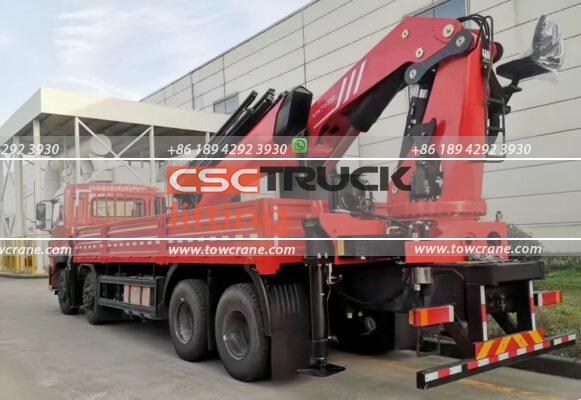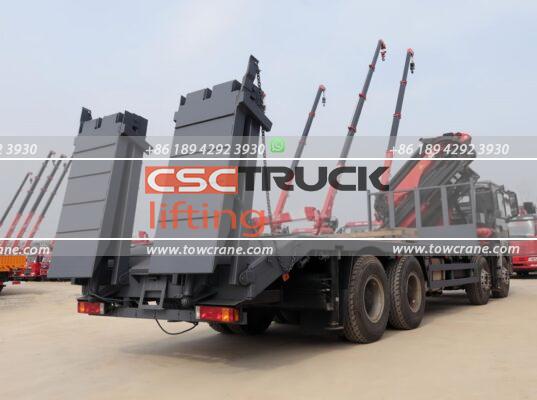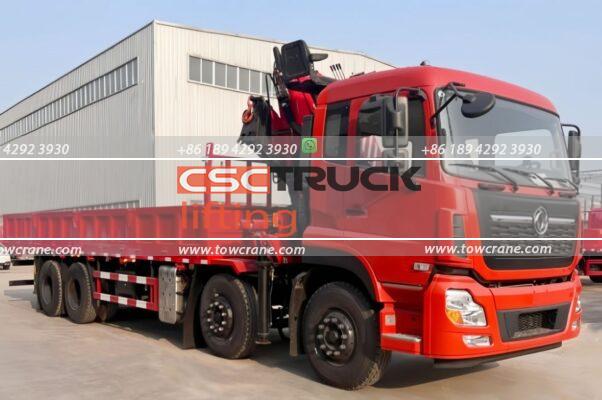Ensuring safety and stability during towing operations with a wrecker requires a systematic approach. Here are detailed guidelines to ensure that towing tasks are conducted safely:
Pre-Operation Checks
Secure Attachment
- Check Fastenings: Ensure that the towed vehicle is securely attached to the wrecker using appropriate tow bars, chains, or straps. Verify that all connections are tight and secure.
- Safety Chains: Use safety chains in addition to the primary towing connection to provide an extra layer of security.
- Lighting and Signals: Confirm that all lights, including brake lights and turn signals on both the wrecker and the towed vehicle, are functioning correctly.
During Operation
Seatbelts and Safety Gear
- Seatbelt: Always wear your seatbelt before starting the vehicle.
- Safety Gear: Use any additional safety gear as required, such as reflective vests, especially when operating in low visibility conditions.
Route Planning
- Flat Roads: Opt for flat, even roads whenever possible. Avoid routes with ditches, large potholes, or uneven terrain.
- Avoid Reversing on Slopes: When driving near slopes, avoid reversing. Stick to forward movements to maintain control.
Speed and Gear Management
- Reduce Speed: Drive at a moderate speed, especially on uneven or bumpy roads, to prevent instability.
- Low Gear on Slopes: When descending slopes, use a low gear and proceed slowly. This helps in maintaining control and preventing the vehicle from gaining too much speed.
Weight Distribution
- Front-End Weighting: Ensure proper front-end weighting to maintain stability, particularly on uneven and soft surfaces. This might involve adjusting the load or using ballast if necessary.
Special Situations
Steep Slopes
- Low Gear: Use a low gear when descending slopes and avoid accelerating. Keep the speed slow and controlled.
- Widen Rear Wheels: If possible, adjust the rear wheel track width to provide better stability.
- No Passengers: Prohibit any passengers from riding in the wrecker during towing operations. This prevents unnecessary injuries and maintains focus on the task.
Handling and Maneuvering
- Smooth Driving: Avoid sudden turns, starts, or stops. Smooth driving reduces the risk of the towed vehicle swaying or detaching.
- Gear Shifting: When approaching a slope, shift to the appropriate gear before starting to climb. This helps in maintaining a steady speed and prevents sudden gear changes which can cause instability.
Emergency Procedures
- Avoid Emergency Braking: Instead of sudden braking, decelerate gradually to ensure a smooth stop. This prevents the towed vehicle from crashing into the back of the wrecker or losing control.
Regular Maintenance
Check Regularly
- Brakes and Steering: Ensure that the brakes and steering systems of both the wrecker and the towed vehicle are in good working condition.
- Tires: Regularly inspect the tires for wear and proper inflation. Adequate tread depth and correct tire pressure are crucial for stability.
- Hydraulics: Frequently check the hydraulic systems for leaks and ensure they are functioning properly.
Training and Awareness
Operator Training
- Comprehensive Training: Ensure that all operators are well-trained in handling the wrecker, including proper attachment techniques, maneuvering, and emergency procedures.
- Updated Skills: Keep the training updated to include any new equipment or techniques that may improve safety and efficiency.
Public Awareness
- Clear Signage: Use clear signage on the wrecker to alert other road users about the towing operation. This can include warning lights, reflective strips, and signs indicating a slow-moving vehicle.
- Road Etiquette: Educate the public on how to safely drive around wreckers and tow trucks to prevent accidents.
By following these guidelines, the safety and stability of towing operations with a wrecker can be significantly enhanced, reducing the risk of accidents and ensuring the effective and secure transportation of disabled vehicles.












